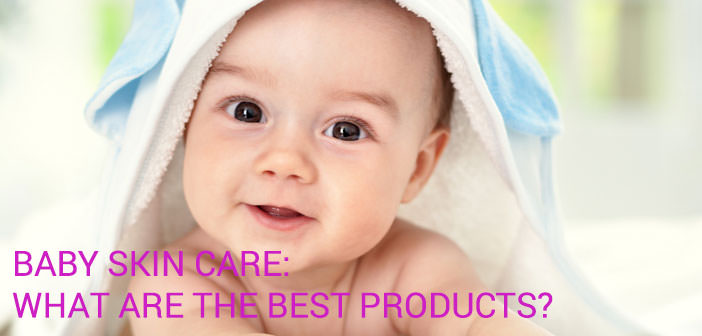Baby skin care: What are the best products?
The skin of newborns is different from the skin of an adult and, consequently, requires different care and cosmetics. Cosmetics dedicated to children must respect and protect without attacking: what are the best products for children’s delicate skin?
Table of Contents
Baby’s skin
Baby’s skin, from birth to adolescence, has some differences compared to adult skin. First of all, a child’s skin is more delicate than the skin of us adults because, in children, the outermost part of the skin (horny layer) is thinner and more vulnerable to external agents; it follows that the baby’s skin needs different protection.
Furthermore, children have practically sebum-free skin and tend to be drier than adults: until puberty, the skin appendages do not produce sebaceous secretions. Thus, a child’s skin needs a very gentle cleansing and a few simple products that protect it from external chemical and physical agents for the reasons just seen.
The newborn’s skin requires little cosmetic care, and no special or expensive products are needed. However, up to the first year of age, there are two useful products: a bath product and one to avoid diaper irritation.
Baby bath products
As regards cleansing, for the baby’s skin, you can choose between two cheap and easily available natural products: sweet almond oil or rice starch.
It is possible to clean the skin and hair of the newborn simply by using a spoonful of sweet almond oil in the bathwater and, in reality, the cleansing oil can be used until puberty; this oil is also an excellent product for cleaning, soothing, and softening the baby’s skin while changing a diaper.
Even the rice starch powder is an excellent natural product for the cleansing of the newborn. Also, in this case, it should be chosen pure and without added fragrances: you can use it simply by dispersing a spoon in the bathwater to cleanse the skin and hair of the newborn.
The shampoo is unnecessary for infants: as we have seen, infants do not have a sebum production that justifies a degreasing cleansing. On the contrary, the use of soaps, shower gel, or very foaming products could irritate the baby’s skin.
Products to protect the baby’s skin
After a bath or after changing, clean skin should be protected from irritation and redness due to the diaper: the ideal is a zinc oxide ointment with a soothing action.
Do-it-yourself ideas.
A straightforward product to prevent and soothe redness due to the diaper can also be prepared at home, mixing in equal parts glycerin, rice starch, zinc oxide, and water (25/30 grams each): water-based pasta is kept at room temperature for a month. Then, it is applied after the change on the already cleaned skin.
The use of children’s talc is controversial: on the one hand, it is useful for absorbing moisture and preventing irritation, but on the other, inhaling the powders contained in the talc can cause respiratory problems. It can be used sporadically, alternating it with a starch-based fluid cream.
If you want to make DIY talc, mix 130 grams of corn starch with 100 grams of rice starch and 15 grams of zinc oxide. Zinc oxide can be purchased in the pharmacy or on the Internet at the e-commerce of cosmetic raw materials.
In addition to protecting the baby’s skin after the change, it will be necessary to protect the baby from the sun in summer. To protect the baby’s skin from the sun’s rays, avoid exposing it to the sun and apply a specific cream with a suitable sun filter on exposed areas of the body.
Ingredients to avoid in cosmetics for babies and children
If you prefer to buy specific cosmetics for baby care instead of using simple products, we have just seen but want a natural and eco-bio product, and you can contact your herbalist.
The list of ingredients to avoid in children’s cosmetics includes silicones, aggressive surfactants, petrolatum (including petroleum jelly, mineral oils, paraffin) perfumes, and parabens (preservatives).
Most of the cosmetic products that we find on the market, especially those for children, are safe and controlled. However, many ingredients are not included in the formulations when it comes to children’s cosmetics: avoid using cosmetics formulated for babies and children. Adults and rely on specific products designed for them.

